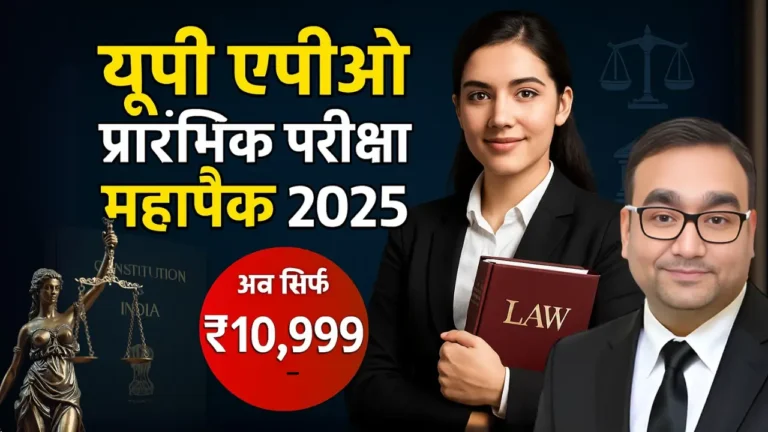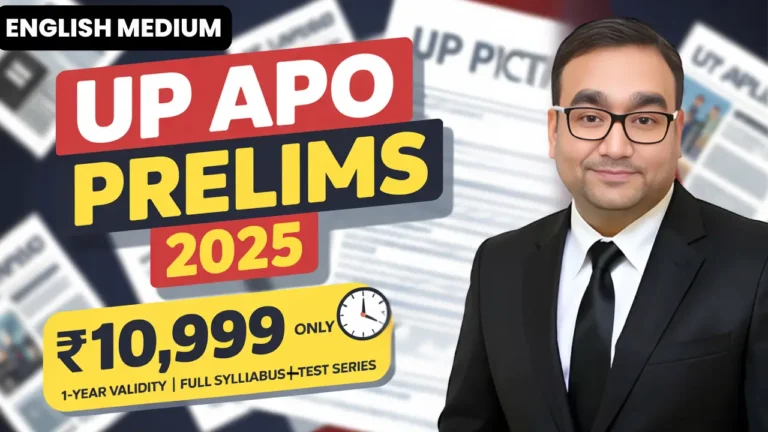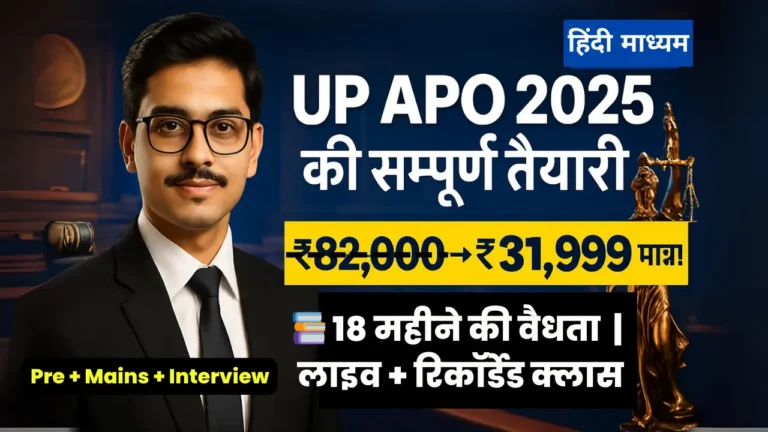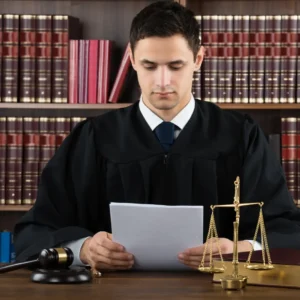Discover the Supreme Court’s 2025 strategy to reduce 7.24 lakh criminal appeals using AI, digitization, and case management. Must-know for UPSC, Judiciary, CLAT! Join Doon Law Mentor.
Table of Contents
Introduction: Revolutionizing Justice for Judiciary Exam Success
As Judiciary Exams 2025 approach, the Supreme Court’s groundbreaking strategy to tackle a staggering 7.24 lakh criminal appeals is a must-know for aspirants. Announced on May 10, 2025, in the In Re: Bail Policy Case, this plan leverages AI tools, digitization, case management registrars, and bail reforms to clear backlogs and ensure speedy justice. With UPSC, Judiciary, and CLAT exams testing your grasp of legal reforms, this topic is your ticket to acing questions on judicial efficiency, constitutional rights, and technology in law. Picture yourself confidently answering questions on the National Judicial Data Grid or Article 21 in your mains or interview! This article dives into the Supreme Court’s blueprint—endorsed by Justices Abhay S. Oka and Ujjal Bhuyan—covering AI-powered tools like SUVAS, digitization of records, and more. Let’s explore this game-changer with Doon Law Mentor to boost your exam prep!
1. The Crisis: 7.24 Lakh Criminal Appeals Clogging High Courts
Context: As of March 22, 2025, 7,24,192 criminal appeals (against conviction and acquittal) are pending across India’s High Courts, per the National Judicial Data Grid (NJDG). This backlog delays justice, impacting the right to speedy trial under Article 21.
Key Data:
- Allahabad High Court: 2.77 lakh appeals (highest).
- Madhya Pradesh High Court: 1.15 lakh appeals.
- Smaller High Courts:
- Patna: 44,664 appeals.
- Punjab & Haryana: 79,326 appeals.
- Rajasthan: 56,455 appeals.
- Bombay: 28,257 appeals.
- Chhattisgarh: 18,000+ appeals.
Supreme Court’s Observation: “There is a huge problem faced by all the High Courts,” noted the bench, highlighting the need for systemic reforms to reduce pendency.
Exam Relevance: Crucial for UPSC GS-2 (Judiciary) and Judiciary (Constitutional Law). Understand backlog causes and Article 21 implications.
Engaging Insight: Imagine 7 lakh cases piling up, delaying justice for years—this crisis is a wake-up call for judicial innovation, perfect for exam essays!
2. Supreme Court’s Multi-Pronged Strategy to Clear Backlogs
In a suo motu petition, In Re: Policy Strategy for Grant of Bail (SMW(Crl) No. 4/2021), the Supreme Court proposed a Model Action Plan for Reduction of Arrears, approved by the Chief Justice of India. High Courts are urged to adopt it with modifications within four months. Here’s the blueprint:
2.1. AI Tools: Leveraging SUVAS for Efficiency
- Supreme Court Vidhik Anuvaad Software (SUVAS): An AI-powered translation tool to translate trial court records and judgments into regional languages, reducing delays in multilingual case processing.
- Application: High Courts can use SUVAS for vetting translations, streamlining document access for judges and litigants.
- Impact: Enhances accessibility, especially in linguistically diverse states, aligning with e-Courts Phase III goals.
Exam Relevance: Key for UPSC GS-3 (Technology in Judiciary) and CLAT (Legal Tech). Know AI’s role in judicial modernization.
2.2. Digitization of Trial Court Records
- Proposal: Amend procedural rules to ensure automatic requisition of soft copies of trial court records once a criminal appeal notice is issued.
- Focus: Begin digitization with Sessions Courts and special courts (e.g., NDPS, POCSO).
- One-Time Verification: Conduct physical verification of pending cases in High Courts and trial courts to ensure NJDG data accuracy.
- Impact: Eliminates delays in record transmission, a major bottleneck in appeal hearings.
Exam Relevance: Vital for Judiciary (Case Management) and UPSC GS-2 (Judicial Reforms). Understand digitization’s role in backlog reduction.
2.3. Case Management Registrars
- New Role: Create a Registrar (Court and Case Management) in all High Courts to ensure case files are ready for hearings and served to counsel in advance.
- Duties: Oversee procedural compliance, maintain case readiness, and reduce adjournments.
- Impact: Streamlines registry operations, ensuring smoother appeal hearings.
Exam Relevance: Essential for Judiciary (Court Administration) and UPSC GS-2 (Governance). Note the role of specialized judicial staff.
2.4. Video Conferencing for Multi-Bench High Courts
- Strategy: Use video conferencing (VC) to allow benches with lower pendency to hear appeals from principal seats with higher backlogs (e.g., Allahabad’s Lucknow bench assisting Allahabad seat).
- Endorsement: Supported by amici curiae Liz Matthew and Gaurav Agarwal.
- Impact: Optimizes judicial resources, speeding up case disposal.
Exam Relevance: Key for UPSC GS-2 (Judicial Efficiency) and CLAT (Technology in Law). Highlight VC’s role in modern courts.
2.5. Bail Policy Reforms
- Guideline: High Courts should liberally suspend sentences under Section 389 CrPC for fixed-term sentences, unless exceptional circumstances exist, per precedents like Bhagwan Rama Shinde Gosai v. State of Gujarat (1999), NCB v. Lakhwinder Singh (2025), and Atul alias Ashutosh v. State of MP (2024).
- Issue: Many High Courts deny bail in conviction appeals, prolonging incarceration.
- Impact: Reduces jail overcrowding and upholds Article 21 rights.
Exam Relevance: Crucial for Judiciary (Criminal Law) and UPSC GS-2 (Fundamental Rights). Master bail jurisprudence.
2.6. Prioritizing Cases
- Priority List:
- Appeals where the accused are in jail.
- Appeals with serious offenses or accused of advanced age (on bail).
- Appeals with life sentences (accused on bail).
- Impact: Ensures timely justice for critical cases, balancing urgency and fairness.
Exam Relevance: Vital for Judiciary (Case Prioritization) and UPSC GS-2 (Justice Delivery).
2.7. Reducing Adjournments
- Guideline: Limit routine adjournments in criminal appeals to protect Article 21 rights.
- Solution: Appoint legal aid lawyers for non-cooperative advocates, per Bani Singh v. State of UP.
- Impact: Speeds up hearings, reducing pendency.
Exam Relevance: Key for Judiciary (Procedural Law) and UPSC GS-2 (Judicial Delays).
2.8. Dedicated Benches and Domain Expertise
- Proposal: Assign dedicated benches for criminal appeals and allocate cases to judges with domain expertise.
- Impact: Enhances speed and quality of judgments.
Exam Relevance: Essential for Judiciary (Court Management) and UPSC GS-2 (Judicial Reforms).
3. Model Action Plan and NCMS Baseline Report
- Model Action Plan: Developed by the Supreme Court Committee for Model Case Flow Management Rules, it includes:
- Targeted criminal appeal lists.
- Data accuracy through physical verification.
- Procedural reforms for case readiness.
- NCMS Baseline Report (2024): Provides case management insights for High Courts and District Judiciary. The Supreme Court directed its Registrar to share it with all High Courts.
- High Court Autonomy: As constitutional courts, High Courts can adapt the plan to their needs, with action plans due within four months for sharing best practices.
Exam Relevance: Crucial for UPSC GS-2 (Judicial Governance) and Judiciary (Case Management). Understand NCMS and action plan frameworks.
4. Bail Policy: Upholding Article 21
- Supreme Court’s Stance: High Courts must follow precedents to grant bail liberally in fixed-term sentence cases, ensuring speedy justice.
- Concern: Data shows many accused are denied bail, prolonging detention and violating Article 21.
- Impact: Reforms aim to reduce jail overcrowding and uphold constitutional rights.
Exam Relevance: Vital for Judiciary (Bail Jurisprudence) and UPSC GS-2 (Fundamental Rights). Know key cases and CrPC provisions.
5. Challenges and Critical Analysis
- Challenges:
- Data Accuracy: NJDG inconsistencies require one-time verification.
- AI Limitations: SUVAS needs vetting to ensure translation accuracy.
- Resource Constraints: Digitization and registrar roles demand funding and training.
- Critical Perspective: While AI and digitization promise efficiency, over-reliance risks algorithmic bias (e.g., US’s COMPAS controversy) and privacy concerns. Human judgment remains irreplaceable, as noted in Christian Louboutin v. Shutiq (2023). The Supreme Court’s cautious approach—using AI for assistance, not adjudication—strikes a balance.
Exam Relevance: Key for UPSC GS-3 (Technology Ethics) and Judiciary (Legal Tech). Analyze AI’s pros and cons.
Conclusion: Your Path to Judiciary Exam Mastery
The Supreme Court’s 2025 strategy to tackle 7.24 lakh criminal appeals is a landmark reform, blending AI tools, digitization, case management, and bail policies to ensure speedy justice. From SUVAS translations to video conferencing, this blueprint addresses the backlog crisis while upholding Article 21. For UPSC, Judiciary, and CLAT aspirants, mastering this topic—spanning judicial efficiency, technology, and constitutional law—is non-negotiable. Whether it’s the Model Action Plan or Registrar roles, each element is a potential exam question. Join Doon Law Mentor to ace your prep with expert guidance and stay ahead in Judiciary Exams 2025!
Join Our Courses: Enroll in expert-led classes at Doon Law Mentor to master current affairs and conquer your exams!
Tags: Supreme Court Criminal Appeals Strategy 2025, AI in Judiciary, Bail Policy 2025, UPSC 2025, CLAT 2025, Judicial Reforms
Hashtags: #SupremeCourt2025 #JudiciaryExams #UPSC2025 #CLAT2025 #DoonLawMentor






